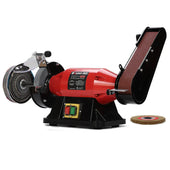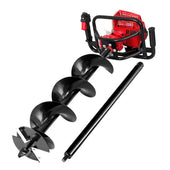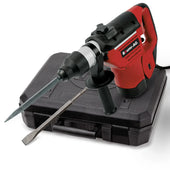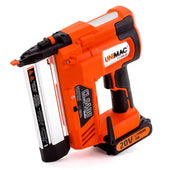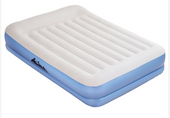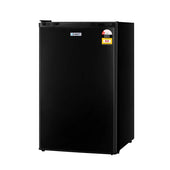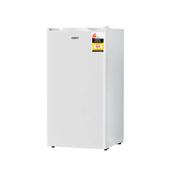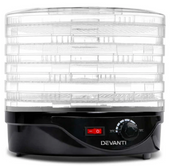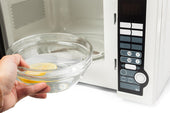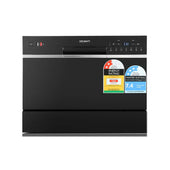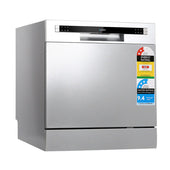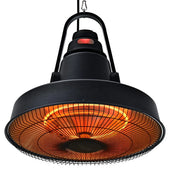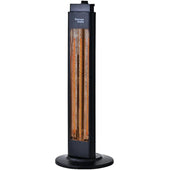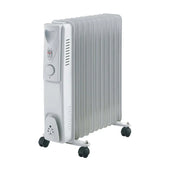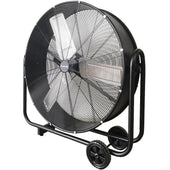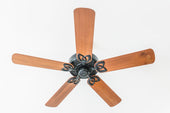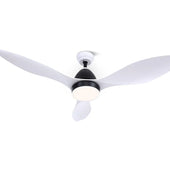Introduction: Why Material Choice Matters in Tap Accessories
Selecting the right material for tap accessories is crucial for both performance and longevity. Materials influence durability, resistance to corrosion, aesthetic appeal, and overall functionality. Brass and stainless steel are commonly used, each offering distinct advantages and drawbacks. Understanding how materials withstand wear and environmental factors aids buyers in making informed decisions ,during days when choosing accessories for everyday use. For example, taps in moist conditions require high anti-corrosion properties to prevent damage. Additionally, maintenance needs vary with material properties, directly affecting ease of use and cost. By considering material characteristics, consumers can maximise value, ensuring the accessories not only last longer but also maintain their functionality.
Overview of Brass Tap Accessories: Composition and Characteristics
Brass tap accessories are primarily composed of an alloy of copper and zinc, offering a balance of durability and workability. The proportion of these metals can be adjusted, influencing the material’s strength and corrosion resistance. Brass is known for its inherent resistance to rust, making it suitable for plumbing and bathroom applications exposed to moisture.
Key characteristics of brass tap accessories include:
- Corrosion Resistance: Brass resists pitting and surface damage from water and most atmospheric conditions.
- Aesthetics: Its warm, golden hue lends a traditional and elegant look to fixtures.
- Workability: Brass is malleable, allowing for intricate designs and custom shapes.
- Antimicrobial Properties: Its copper content helps minimise bacterial contamination on surfaces.
However, regular polishing is required to maintain their appearance.
Stainless Steel Tap Accessories: Composition and Key Features
Stainless steel tap accessories are composed mainly of iron, chromium, and nickel, with smaller quantities of elements like molybdenum and manganese. Chromium plays a key role in forming a protective oxide layer, ensuring resistance to corrosion. The hygienic properties of stainless steel are particularly beneficial in environments where cleanliness is crucial, such as kitchens and bathrooms.
Key Features:
- Corrosion Resistance: Excellent durability against rust and oxidation, even in moist conditions.
- Strength and Durability: High tensile strength supports long-term heavy usage.
- Low Maintenance: Requires minimal effort for cleaning and upkeep due to its smooth, non-porous surface.
- Aesthetic Appeal: Sleek, modern design complements contemporary interiors.
- Eco-Friendliness: Completely recyclable, reducing environmental impact.
Optimal for high-traffic or wet areas, these accessories offer lasting performance.
Comparing Durability: Brass vs Stainless Steel in Everyday Use
When evaluating the durability of brass and stainless steel in tap accessories, it is essential to recognise their inherent properties. Brass, an alloy of copper and zinc, offers excellent resistance to corrosion, particularly in moisture-rich environments. Its malleability allows for intricate designs but may result in susceptibility to denting under heavy impact.
On the other hand, stainless steel, with its chromium addition, boasts superior resistance to oxidation and rust, making it ideal for high-contact areas. Its hardness ensures minimal wear over time, although exposure to harsh chemicals might compromise its surface finish.
Both materials perform differently depending on usage scenarios, highlighting the importance of context in selection.
Corrosion Resistance: Which Material Stands the Test of Time?
When comparing brass and stainless steel, their resistance to corrosion significantly impacts their longevity and maintenance needs.
- Brass, an alloy of copper and zinc, resists corrosion well, particularly in indoor settings. Its natural patina formation acts as a protective layer over time, preventing deep corrosion. However, in highly chlorinated water or salt-laden environments, brass is more prone to degradation.
- Stainless Steel, on the other hand, contains chromium, forming a passive oxide layer that guards against rust. This makes it highly durable even in aggressive environments, including exposure to moisture, salt, and extreme temperatures.
Both materials offer durability, but environmental factors sway performance levels.
Maintenance and Cleaning: Ease of Care for Brass and Stainless Steel Accessories
Proper maintenance and cleaning ensure the longevity of both brass and stainless steel tap accessories. Brass accessories require more frequent care to prevent tarnishing or corrosion due to exposure to moisture. They typically need polishing using specialised brass cleaners or a mixture of vinegar and baking soda to maintain their lustre and prevent oxidisation.
Stainless steel accessories, on the other hand, are favoured for minimal upkeep. They resist stains and corrosion naturally. Cleaning involves wiping with a damp cloth or using mild detergents to remove dirt or fingerprints. Regular care for both materials preserves their appearance and performance, enhancing overall durability.
Aesthetic Appeal: How Brass and Stainless Steel Fit into Modern Bathrooms
Modern bathroom design thrives on combining functionality with visual elegance. Brass accessories often evoke a classic, luxurious charm, enhancing spaces with their warm, golden tones. They create a vintage or chic ambience, which pairs well with marble surfaces or muted bathroom palettes. On the other hand, stainless steel embodies sleek and contemporary aesthetics. Its silvery sheen complements minimalist and industrial designs, adding a clean, polished look to modern bathrooms.
Both materials adapt well to diverse design schemes. Brass suits bold, statement pieces, while stainless steel favours clean lines and subtle elegance. Selecting between them depends on personal style and bathroom design goals.
Environmental Impact: Sustainability of Brass vs Stainless Steel
Both brass and stainless steel have distinct environmental footprints, influenced by their production, lifespan, and recyclability. Brass is primarily an alloy of copper and zinc, with copper mining often associated with significant ecological disruption. In contrast, stainless steel, an alloy of iron and chromium, typically requires intensive energy for refinement due to high-temperature processing.
Brass is highly recyclable, though its melting process may release harmful fumes. Stainless steel, however, boasts near 100% recyclability with minimal waste during reprocessing. Factors like durability and corrosion resistance further enhance stainless steel’s eco-credentials, as it tends to last longer, reducing replacement needs. Both materials contribute valuable traits to sustainable manufacturing.
Price Point Comparison: Is Durability Worth the Cost?
When comparing brass and stainless steel tap accessories, cost differences become a decisive factor. Brass is generally more affordable upfront, making it an attractive option for budget-conscious buyers. However, stainless steel, while more expensive, offers enhanced corrosion resistance and requires less frequent replacement.
- Brass accessories: Lower initial cost, suitable for areas with minimal water exposure.
- Stainless steel accessories: Higher upfront cost, ideal for humid environments or regions with hard water.
The longevity of stainless steel could justify its price where durability is essential. Buyers should weigh maintenance costs against potential savings over time to determine value. Durability plays a crucial role in this decision.
Real-World Examples and Case Studies: Performance Over Time
Numerous case studies highlight the durability differences between brass and stainless steel tap accessories in practical environments.
- Brass Examples: Plumbing systems in older homes frequently feature brass components, many of which function reliably after decades. However, these often show signs of tarnishing, particularly in regions with hard water, leading to a need for periodic polishing or replacement due to corrosion over time.
- Stainless Steel Examples: Commercial kitchens often utilise stainless steel taps and fittings, valued for their resistance to rust and staining under continuous use. Reports from such environments indicate a longer lifespan, even in high-humidity or acidic conditions, due to stainless steel’s non-reactive surface.
These examples underline performance variations rooted in environmental and usage factors.
Decoding the Best Option: Brass or Stainless Steel for Longevity?
When assessing durability in tap accessories, the choice between brass and stainless steel hinges on distinct material properties. Brass, an alloy primarily of copper and zinc, boasts excellent corrosion resistance, particularly in environments with moisture exposure. It offers natural antimicrobial qualities, making it less prone to bacteria build-up and ideal for bathroom or kitchen settings. However, brass may tarnish over time and requires regular maintenance.
Stainless steel, renowned for its strength, resists oxidation and corrosion effectively due to its chromium content. Unlike brass, it exhibits superior resistance to scratches and impact, maintaining its aesthetic longer without tarnishing. Its robustness makes it optimal for high-traffic applications.
Conclusion: Final Thoughts on Material Durability in Tap Accessories
When assessing material durability in tap accessories, both brass and stainless steel present distinct characteristics that cater to diverse needs. Brass, known for its corrosion resistance and malleability, provides strong performance in environments with varying water qualities. Stainless steel, on the other hand, offers superior robustness against physical wear and maintains its aesthetic even in high-moisture settings.
Factors such as heat resistance, maintenance needs, and susceptibility to dents or scratches distinguish their performance further:
- Brass: Excels in ease of maintenance and longevity in controlled conditions.
- Stainless Steel: Offers unmatched resistance to scuffs and better hygiene.
Therefore, understanding usage environments helps determine the material best suited for long-term utility.



